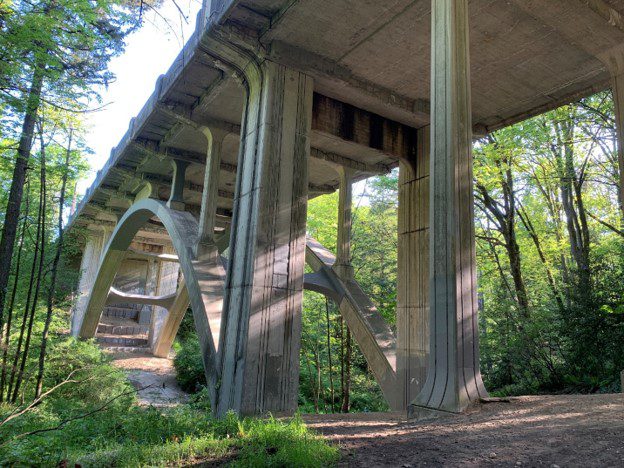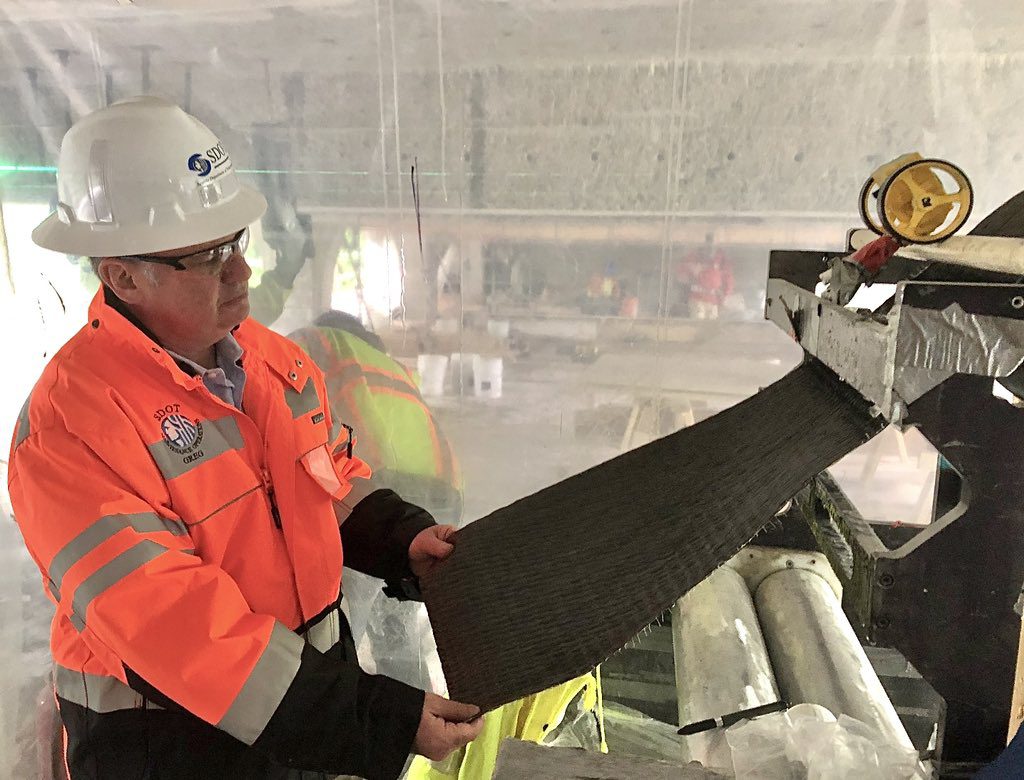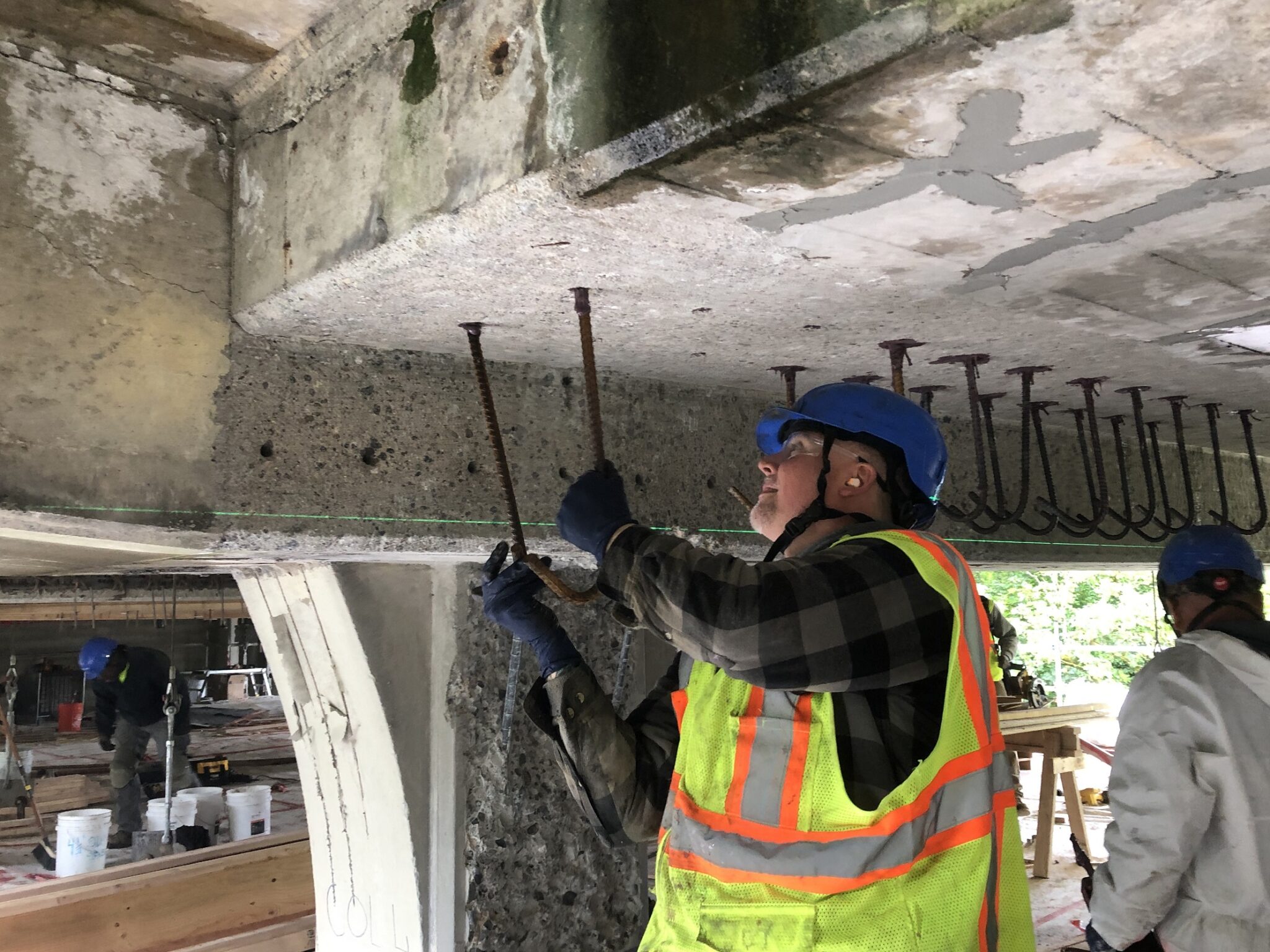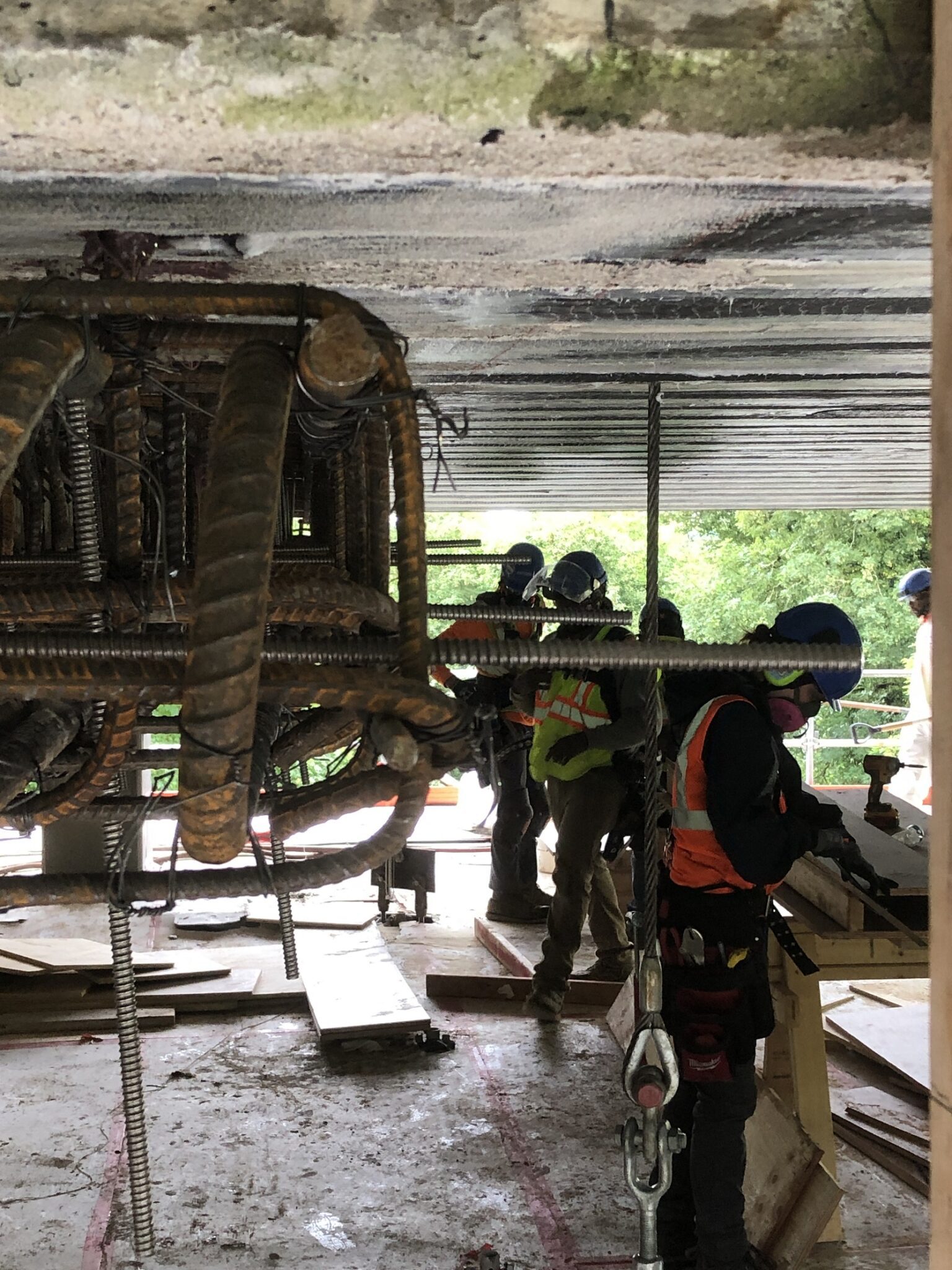 The Cowen Park Bridge in northeast Seattle. A seismic retrofit was completed on this bridge in 2020. Photo: SDOT
The Cowen Park Bridge in northeast Seattle. A seismic retrofit was completed on this bridge in 2020. Photo: SDOT Blog stats: 950 words | 5-minute read
At-a-glance:
- Our Bridge Seismic Program helps us proactively strengthen our existing bridges all across the city to make them more resilient in the case of a major earthquake.
- We’re on track to complete 16 bridge seismic retrofits thanks to the Levy to Move Seattle.
- We’ve already completed 5 of these seismic retrofit projects as part of the Levy to Move Seattle, and we’re on track to complete 11 more, with major work taking place this year.
- This blog post highlights the work ramping up in the weeks and months ahead and how you can stay informed.
Earthquakes could have a major impact on Seattle’s bridges. To address this risk, the City of Seattle established a Bridge Seismic Program to assess how vulnerable the City’s bridges were to earthquakes and reinforce bridges to better withstand the potential impacts of an earthquake.
As part of the Levy to Move Seattle, we committed to seismically reinforcing 16 vulnerable bridges. Approved by voters in 2015, the 9-year, $930 million Levy to Move Seattle provides funding to improve safety for all travelers, maintain our streets and bridges, and invest in reliable, affordable travel options for a growing city.
Every bridge receives ongoing maintenance and inspections. Our seismic retrofit program goes above and beyond basic maintenance to invest in bringing older bridges up to modern earthquake safety standards.
Thanks to this Levy funding, we are on track to deliver the 16 bridge seismic retrofit projects and meet our commitment in the Levy to Move Seattle Ordinance.

In a seismic retrofit project, we modify and strengthen a bridge’s components to help reduce its vulnerability to earthquakes. We do not change the current transportation use and operation of the bridges.
The types of seismic reinforcement needed for a bridge may vary and are tailored to the specific type of bridge.
Typical modifications for a concrete arch bridge include (shown on the graphic below):
- Repairing existing concrete components that are in poor condition
- Installing concrete bolsters and enlarging the bridge’s columns and crossbeams
- Strengthening the existing arch with a concrete infill wall
- Installing carbon fiber wrapping to the bridge’s crossbeams, columns, and arches
- Replacing the expansion joints at both ends of the bridge

Five seismic retrofit projects have already been completed to date via the Levy to Move Seattle, and we’re on track to complete 11 more. Significant work continues this year.
Here is the current status of each project, shown on the map below:

This effort represents a commitment by our entire team to move this important work forward and prioritize delivering on our commitments to voters.
The McGraw St Bridge seismic retrofit began construction in March, and the Delridge Way Pedestrian Bridge seismic retrofit began construction in April.
In general, during work for bridge seismic retrofit projects, neighbors can expect the following construction impacts:
- Work in the public right-of-way near your home or business
- Occasional traffic or lane restrictions, including closures on side streets
- Occasional detours for people walking and biking, including potential closures of crosswalks and sidewalks
- Typical construction activities such as noise, dust, vibrations, and construction equipment staged on the bridge and within the work area
- Temporary on-street parking restrictions, with signs placed 72 hours in advance to notify residents not to park in the areas
- Construction work will generally occur weekdays between 7 AM and 5 PM, from Monday to Friday
Here are a few more photos of the McGraw St Bridge, where we’ve made progress in the seismic retrofit work since construction began in March.



As construction takes place on more of these bridges in 2024, we will continue to reach out to neighbors and the traveling public to share details about what to expect during construction and provide more information on detour routes when needed.
We will contact individual property owners to discuss any specific impacts on their properties and permissions needed for access during construction, where applicable. We appreciate your patience throughout this process as we work to reinforce these bridges to better withstand earthquakes.
Stay informed
We’re committed to keeping you informed and working with neighbors to limit construction impacts to the extent possible.
Here are a few ways to find information about our bridge seismic projects:
- Sign up to receive regular email updates about the Bridge Seismic Program
- Visit the Bridge Seismic Program webpage
- Email the project team at BridgeSeismicRetrofit@seattle.gov
- Leave a voicemail at (206) 775-8734. A project representative will return your call.